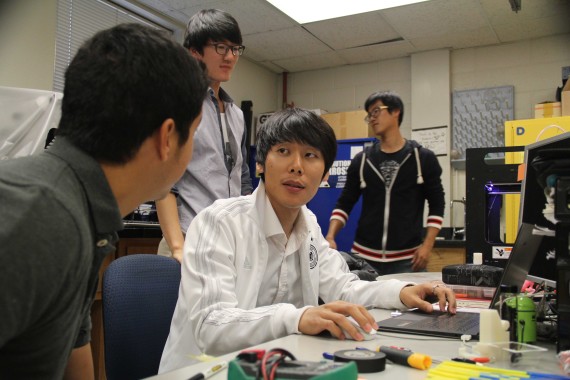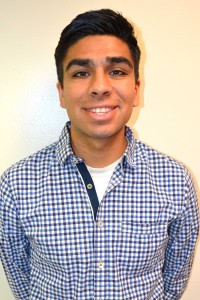Walk into Burgess Hall, across from the bookstore, and take the elevator to the first floor. There, you will find Namsoo Kim and his research team hard at work trying to revolutionize the 3-D printing industry.
In spring of 2011, UTEP and Seokyeong University in South Korea began a partnership that allows students to earn a dual-degree in the metallurgical and materials engineering program.
UTEP will provide instruction on metallurgical and materials and SKU offers instruction in nano-convergence engineering.
Students are required to complete two-and-a-half semesters at SKU and continue their education at UTEP for another three semesters, which will give them their bachelor of science degree in metallurgical and
materials engineering.
Kim says that 40 new South Korean students join the degree program every year.
SKU donated $2.2 million and UTEP pitched in $1.8 million to the program, which was launched by Kim.
In 2013, the Department of Metallurgical and Materials Engineering at UTEP was awarded a $191,240 National Science Foundation grant that helped fund a new degree option in the department, printing nano-engineering for the fall 2014 semester.
UTEP is one of the first in the country to offer PNE as an option
for a degree plan.
“I think it’s the opportunity that (Kim) gives the students,” said Edgar Reyes, senior metallurgical and materials engineering major. “He has really good research projects and a lot of projects to work on.”
Kim wants to speed up the 3-D printing process, eliminate waste and enormously economize the industry. He wants his $50 printer to produce the exact same print result that a $500,000 printer would accomplish, just on a much smaller scale in size.
“I want to create a world-class printer. I want to be able to print anything out of anything,” Kim said. “My job is using different types of 3-D printers. Anything you can think of, I want to print.”
Kim is an expert in the field of printing technology–from materials, technology and electronics as well as the standardization
of printed devices.
Rarely does this team of engineers see the sun. Through trial and error, numerous publications of articles (30 per year) on nano-technology have been written with the perception that they can change the 3-D print industry.
In the future, Kim would like to print large-scale models of everything, from chairs and tables to backpacks and shoes. This process is a long one to accomplish, so he tutors his students on how to be leaders.
“I want to teach my students so that they can continue this work long after I am gone,” Kim said.
Students in the program, who have just begun the second term of the partnership, are still undecided as to what they will do post graduation. Some will pursue a career back in South Korea; others will do so here, along with obtaining
a graduate degree.
In the meantime, they enjoy the campus at UTEP and its
available resources.
Seonghyeon Park is a junior who is in the first of his three semesters at UTEP. He loves the campus, football games and Taco Bell.
“We have opportunity to research here at UTEP,” he said. “I like the campus and the climate. Here it is hot, while in South Korea it is humid.”
Luis Barrio may be reached at [email protected].








